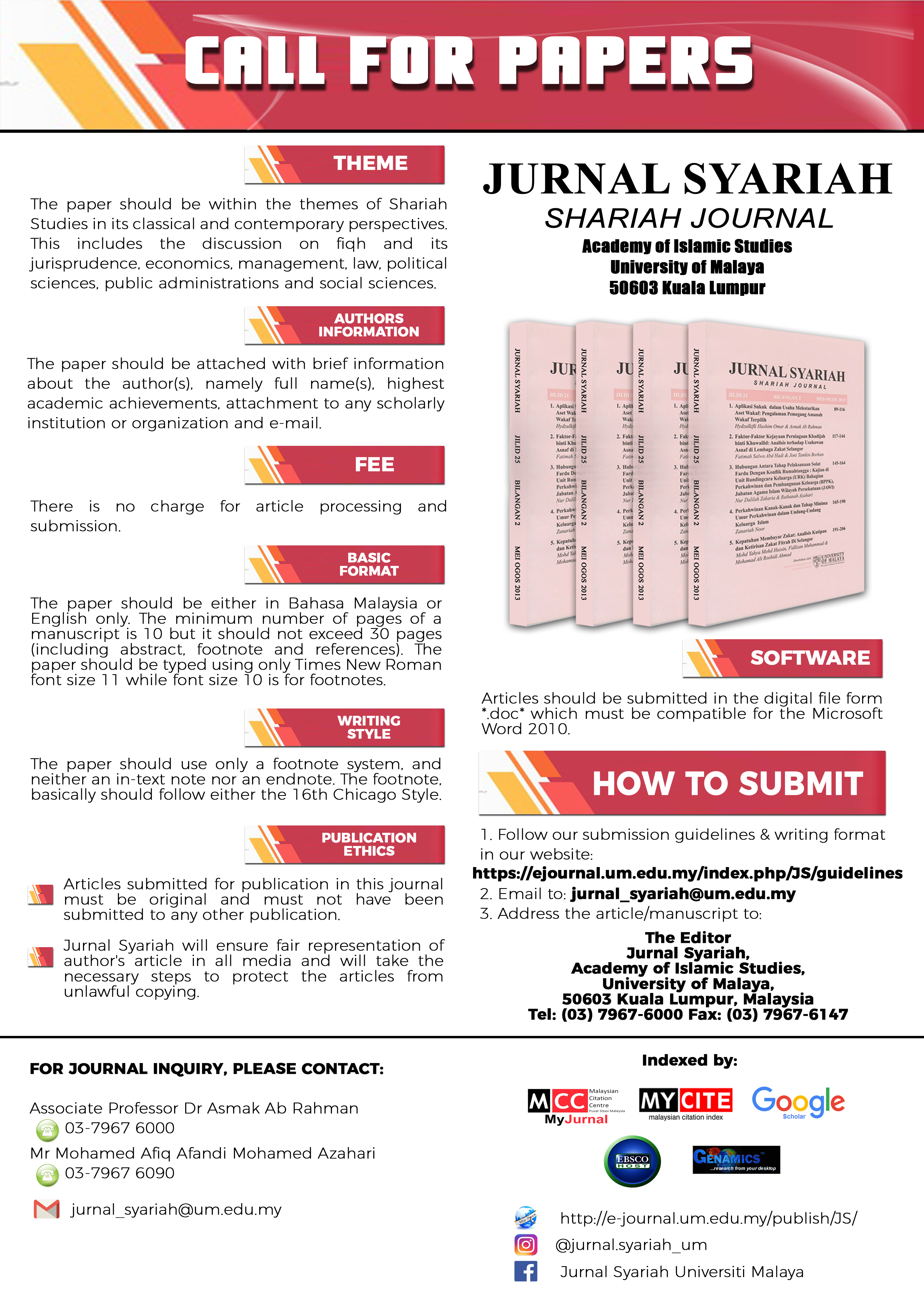PENENTUAN KADAR KIFAYAH DAN MA’RUF NAFKAH ANAK DAN ISTERI: KAJIAN TERHADAP PENGHAKIMAN MAHKAMAH SYARIAH
Determination of Kifayah (Adequateness) and Ma’ruf (Goodness) for Maintenance for The Wife and Child: An Analysis of The Judgement of The Shariah Courts
Keywords:
Maintenance for wife and child, rate of kifayah and ma’ruf, Shariah Court Judgement.Abstract
In Islam, it is very important to the judges to determine the amount of maintenance for the wife and child that is in line with the meaning of kifayah and makruf. This article aims to study cases decided by the judges at the Malaysian Syariah court relating to maintenance for the wife and children. The study attempts to examine the factors considered by the judges in determining the amount of maintenance for the wife and child in order to comply with the meaning of kifayah and ma’ruf. Data were collected from the cases issued by the Shariah Court in Malaysia. This research found that the judges consider several factors in determining the rate of nafkah for the wife and child based on their own judgment. Consequently, in the long run, it will differentiate the judgement made by the judges from one case to another according to their individual experience. Among the factors take into consideration by the judges are: ability of the maintenance provider, financial need by the plaintiff, i.e., ex wife and child, essential expenses and the socio economic status of the wife.
Downloads
Downloads
Published
How to Cite
Issue
Section
License
COPYRIGHT: All rights reserved. Not allowed to be reproduced any part of articles and contents of this journal in any form or by any way, whether electronic, mechanical, photocopying, recording or otherwise without permission in writing from the Chief Editor, Jurnal Syariah.



















